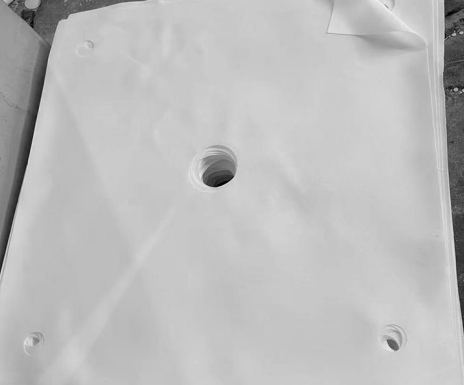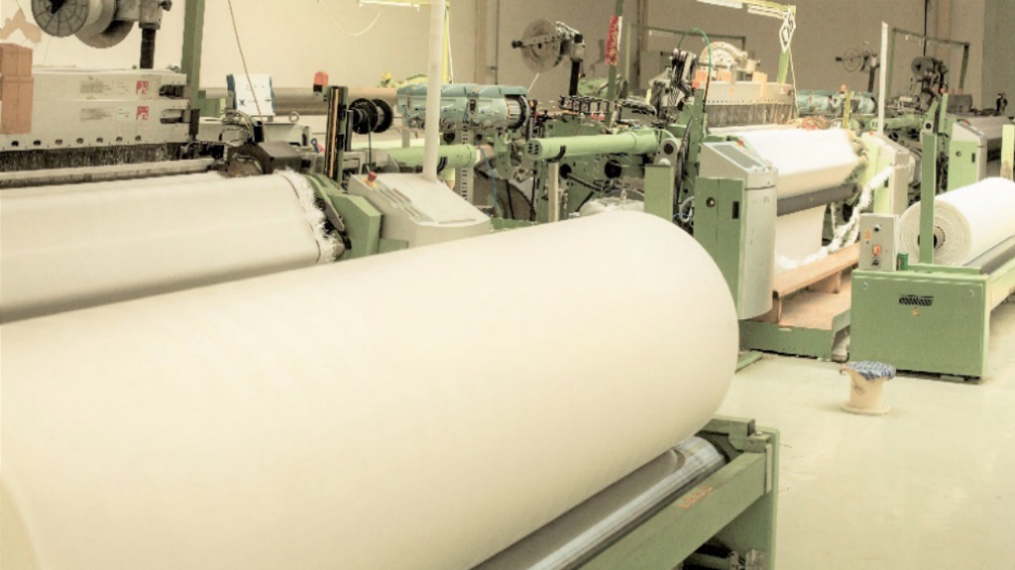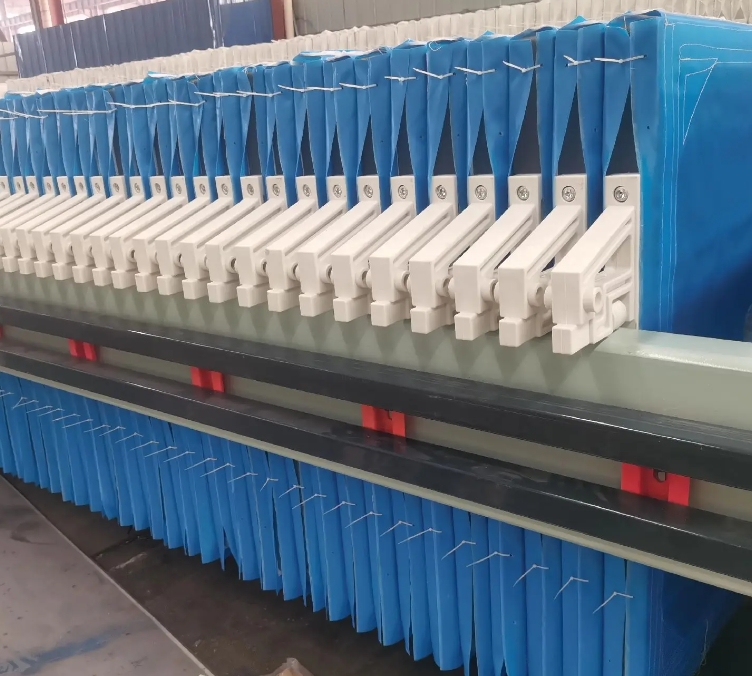
Filter press cloth plays a crucial role in the filtration process. Its quality and proper selection directly impact both the yield and filtration performance.
Currently, nearly all filtration equipment relies on filter cloth as the filtration medium.
To meet diverse working conditions and improve performance, filter press cloths are often made from special fibers such as PP, polyester, nylon, PTFE, and aramid, each offering unique advantages. Additionally, selecting the appropriate weaving type is essential, as it directly affects filtration efficiency and cake discharge capability.
Filter press cloth plays a crucial role in the filtration process. Its quality and proper selection directly impact both the yield and filtration performance.
Currently, nearly all filtration equipment relies on filter cloth as the filtration medium.
To meet diverse working conditions and improve performance, filter press cloths are often made from special fibers such as PP, polyester, nylon, PTFE, and aramid, each offering unique advantages. Additionally, selecting the appropriate weaving type is essential, as it directly affects filtration efficiency and cake discharge capability.
Filter cloths can be classified based on their application in different types of filter presses.
Plate and Frame Filter Press:
Plate and frame filter presses commonly use plate and frame filter cloths. These cloths have rubber or plastic frames filled with filter media, such as filter membranes or filter papers. They are designed to provide support during the filtration process and ensure the uniformity and stability of the filter media.
Membrane Filter Press:
Membrane filter presses use membrane filter cloths, which have an additional layer of elastic membrane between the plates of a plate and frame filter press. These membranes can apply extra pressure during the filtration process, enhancing filtration efficiency and yield.
Screw Press:
Screw presses utilize screw press filter cloths, which are characterized by their wear and corrosion resistance and effective cake discharge capability. The design of screw press cloths aims to ensure smooth filtration processes and easy cleaning and maintenance.
Belt Filter Press:
Belt filter presses employ belt filter cloths, which resemble conveyor belts and are typically made from wear-resistant and corrosion-resistant materials. The primary role of belt filter cloths is to support and transport the filter cake during the filtration process and discharge the filtrate.
Centrifugal Filter:
Centrifugal filters use centrifugal filter cloths, which effectively separate solid-liquid mixtures within high-speed rotating centrifuges.Centrifugal filter cloths typically possess excellent wear and corrosion resistance to withstand high-speed rotation and intense pressure.
Each type of filter press requires specific filter cloths tailored to its design and operating conditions. By selecting the appropriate filter cloth for each type of filter press, optimal filtration performance can be achieved, ensuring efficient solid-liquid separation processes.
When selecting filter cloths for filter presses, it's essential to consider their basic specifications including: yarn fiber material, yarn filament type, weave pattern, weight, permeability, cloth accessories, edge treatment, etc. They are all incorporated into our filter cloth structure to increase the cloth's lifespan, improve cake detachment characteristics, and enhance filtration operations.
1. Filter Cloth Materials
The yarn fiber materials for filter cloths for filter presses are typically produced from the following materials:
① Polypropylene (PP)
② Polyethylene (PE)
③ Polyester fiber
④ Nylon
⑤ Other materials
The selection of filter cloths for filter presses needs to consider the fiber and yarn types, as well as the weave pattern, to adapt to specific application scenarios and operating conditions.
2. Design of Filter Cloth Yarn
Different yarn designs for filter cloths for filter presses will result in different cloth characteristics. Common designs of filter cloth yarn include:
① Multifilament or continuous filament yarn
② Monofilament yarn
③ Staple yarn (spun yarn)
Multifilament Yarn: Multifilament or continuous filament yarn is produced through continuous extrusion of synthetic resin. Smooth filament bundles are twisted together in an "S" or "Z" twist to form yarn. Increasing the twist reduces entanglement (particles trapped within the yarn structure) but also decreases collection efficiency. Multifilament yarns have higher tensile strength and average particle collection efficiency, thus, generally facilitating cake detachment.
Monofilament Yarn: Monofilament yarn is a single, heavy extrusion. These extrusions are smooth and have high tensile strength. In some cases, they are modified with fillers. Monofilament yarns have excellent cake detachment and anti-wrinkle properties, but low particle collection efficiency.
Staple Yarn (Spun Yarn): Staple (spun) yarn is synthetic continuous filaments extruded and cut into short lengths. These short fibers are combed and twisted using cotton or wool manufacturing systems (wool yarn has a large volume). These staple yarn fibers have low tensile strength and large surface area. They have good particle retention but usually poor cake detachment.
3. Weave Pattern of Filter Cloth
Different weave patterns of filter cloths for filter presses will affect cake detachment characteristics, wear resistance, acid-alkali resistance, particle retention, etc. Common weave patterns for filter cloths include:
① Plain weave
② Twill weave
③ Satin weave
Plain Weave: Plain weave filter cloth is one of the simpler weave patterns. The warp and weft yarns alternate in crossing. Plain weave fabrics are usually not flexible but stable. They feature high particle retention and low abrasion resistance, with average cake detachment performance.
Twill Weave: Twill weave is characterized by diagonal or twill lines. Each warp floats on at least two or more consecutive weft yarns, increasing the number of yarns per unit area compared to plain weave, without sacrificing fabric stability. Its features include uniform cake detachment and good mechanical strength.
Satin Weave: The surface of satin weave fabric is almost entirely composed of warp threads generated from repeated weaving. This is the most flexible weave pattern, easily deforming around most contours. Satin weave is typically four, five, eight, or twelve threads. Its features include excellent cake detachment performance.
4. Compatibility of Filter Plates
When selecting filter cloths for filter presses, it's necessary to consider the types of compatible filter plates, including plate and frame filter plates, CGR filter plates, recessed filter plates, center feed filter plates, corner feed filter plates, etc. The selection of filter cloths for filter presses needs to consider the performance requirements based on the application materials, usage scenarios, etc., to correctly choose filter cloths based on their specifications and composition.


When selecting filter cloths for filter presses, it's essential to consider their basic specifications including: yarn fiber material, yarn filament type, weave pattern, weight, permeability, cloth accessories, edge treatment, etc. They are all incorporated into our filter cloth structure to increase the cloth's lifespan, improve cake detachment characteristics, and enhance filtration operations.
1. Filter Cloth Materials
The yarn fiber materials for filter cloths for filter presses are typically produced from the following materials:
① Polypropylene (PP)
② Polyethylene (PE)
③ Polyester fiber
④ Nylon
⑤ Other materials
The selection of filter cloths for filter presses needs to consider the fiber and yarn types, as well as the weave pattern, to adapt to specific application scenarios and operating conditions.
2. Design of Filter Cloth Yarn
Different yarn designs for filter cloths for filter presses will result in different cloth characteristics. Common designs of filter cloth yarn include:
① Multifilament or continuous filament yarn
② Monofilament yarn
③ Staple yarn (spun yarn)
Multifilament Yarn: Multifilament or continuous filament yarn is produced through continuous extrusion of synthetic resin. Smooth filament bundles are twisted together in an "S" or "Z" twist to form yarn. Increasing the twist reduces entanglement (particles trapped within the yarn structure) but also decreases collection efficiency. Multifilament yarns have higher tensile strength and average particle collection efficiency, thus, generally facilitating cake detachment.
Monofilament Yarn: Monofilament yarn is a single, heavy extrusion. These extrusions are smooth and have high tensile strength. In some cases, they are modified with fillers. Monofilament yarns have excellent cake detachment and anti-wrinkle properties, but low particle collection efficiency.
Staple Yarn (Spun Yarn): Staple (spun) yarn is synthetic continuous filaments extruded and cut into short lengths. These short fibers are combed and twisted using cotton or wool manufacturing systems (wool yarn has a large volume). These staple yarn fibers have low tensile strength and large surface area. They have good particle retention but usually poor cake detachment.
3. Weave Pattern of Filter Cloth
Different weave patterns of filter cloths for filter presses will affect cake detachment characteristics, wear resistance, acid-alkali resistance, particle retention, etc. Common weave patterns for filter cloths include:
① Plain weave
② Twill weave
③ Satin weave
Plain Weave: Plain weave filter cloth is one of the simpler weave patterns. The warp and weft yarns alternate in crossing. Plain weave fabrics are usually not flexible but stable. They feature high particle retention and low abrasion resistance, with average cake detachment performance.
Twill Weave: Twill weave is characterized by diagonal or twill lines. Each warp floats on at least two or more consecutive weft yarns, increasing the number of yarns per unit area compared to plain weave, without sacrificing fabric stability. Its features include uniform cake detachment and good mechanical strength.
Satin Weave: The surface of satin weave fabric is almost entirely composed of warp threads generated from repeated weaving. This is the most flexible weave pattern, easily deforming around most contours. Satin weave is typically four, five, eight, or twelve threads. Its features include excellent cake detachment performance.
4. Compatibility of Filter Plates
When selecting filter cloths for filter presses, it's necessary to consider the types of compatible filter plates, including plate and frame filter plates, CGR filter plates, recessed filter plates, center feed filter plates, corner feed filter plates, etc. The selection of filter cloths for filter presses needs to consider the performance requirements based on the application materials, usage scenarios, etc., to correctly choose filter cloths based on their specifications and composition.
When selecting filter cloths for filter presses, it's essential to consider their basic specifications including: yarn fiber material, yarn filament type, weave pattern, weight, permeability, cloth accessories, edge treatment, etc. They are all incorporated into our filter cloth structure to increase the cloth's lifespan, improve cake detachment characteristics, and enhance filtration operations.
1. Filter Cloth Materials
The yarn fiber materials for filter cloths for filter presses are typically produced from the following materials:
① Polypropylene (PP)
② Polyethylene (PE)
③ Polyester fiber
④ Nylon
⑤ Other materials
The selection of filter cloths for filter presses needs to consider the fiber and yarn types, as well as the weave pattern, to adapt to specific application scenarios and operating conditions.
2. Design of Filter Cloth Yarn
Different yarn designs for filter cloths for filter presses will result in different cloth characteristics. Common designs of filter cloth yarn include:
① Multifilament or continuous filament yarn
② Monofilament yarn
③ Staple yarn (spun yarn)
Multifilament Yarn: Multifilament or continuous filament yarn is produced through continuous extrusion of synthetic resin. Smooth filament bundles are twisted together in an "S" or "Z" twist to form yarn. Increasing the twist reduces entanglement (particles trapped within the yarn structure) but also decreases collection efficiency. Multifilament yarns have higher tensile strength and average particle collection efficiency, thus, generally facilitating cake detachment.
Monofilament Yarn: Monofilament yarn is a single, heavy extrusion. These extrusions are smooth and have high tensile strength. In some cases, they are modified with fillers. Monofilament yarns have excellent cake detachment and anti-wrinkle properties, but low particle collection efficiency.
Staple Yarn (Spun Yarn): Staple (spun) yarn is synthetic continuous filaments extruded and cut into short lengths. These short fibers are combed and twisted using cotton or wool manufacturing systems (wool yarn has a large volume). These staple yarn fibers have low tensile strength and large surface area. They have good particle retention but usually poor cake detachment.
3. Weave Pattern of Filter Cloth
Different weave patterns of filter cloths for filter presses will affect cake detachment characteristics, wear resistance, acid-alkali resistance, particle retention, etc. Common weave patterns for filter cloths include:
① Plain weave
② Twill weave
③ Satin weave
Plain Weave: Plain weave filter cloth is one of the simpler weave patterns. The warp and weft yarns alternate in crossing. Plain weave fabrics are usually not flexible but stable. They feature high particle retention and low abrasion resistance, with average cake detachment performance.
Twill Weave: Twill weave is characterized by diagonal or twill lines. Each warp floats on at least two or more consecutive weft yarns, increasing the number of yarns per unit area compared to plain weave, without sacrificing fabric stability. Its features include uniform cake detachment and good mechanical strength.
Satin Weave: The surface of satin weave fabric is almost entirely composed of warp threads generated from repeated weaving. This is the most flexible weave pattern, easily deforming around most contours. Satin weave is typically four, five, eight, or twelve threads. Its features include excellent cake detachment performance.
4. Compatibility of Filter Plates
When selecting filter cloths for filter presses, it's necessary to consider the types of compatible filter plates, including plate and frame filter plates, CGR filter plates, recessed filter plates, center feed filter plates, corner feed filter plates, etc. The selection of filter cloths for filter presses needs to consider the performance requirements based on the application materials, usage scenarios, etc., to correctly choose filter cloths based on their specifications and composition.


European SGS certified imported raw materials
Innovative linear low-density fibers
Excellent abrasion resistance, acid and alkali resistance
Abrasion resistance, wear resistance, high temperature resistance, acid and alkali resistance
High strength, not easily deformed
Double-sided calendering and singeing treatment, easy cake detachment, good filtration effect
European SGS certified imported raw materials
Innovative linear low-density fibers
Excellent abrasion resistance, acid and alkali resistance
Abrasion resistance, wear resistance, high temperature resistance, acid and alkali resistance
High strength, not easily deformed
Double-sided calendering and singeing treatment, easy cake detachment, good filtration effect